Jenny Curtin on Future Ready Opportunities for All
Key Points
-
Shifting mindsets and systems begins with listening deeply to students and incorporating their voices into redesign efforts.
-
Systemic change must address historical inequities, ensuring every student has access to rigorous, meaningful learning and future-ready opportunities.
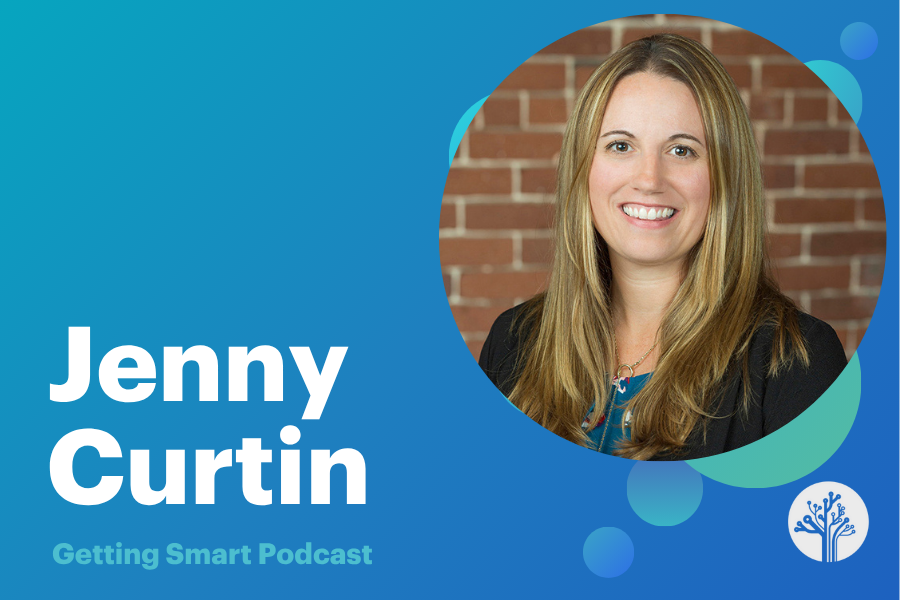
On this episode of the Getting Smart Podcast, Jenny Curtin, Director of Education at the Barr Foundation, shares her insights on reimagining high schools to create equitable, future-ready opportunities for all students. Jenny discusses her work leading transformative education initiatives across New England, including designing new high school models, investing in educators, and building public will for systemic change. She emphasizes the importance of listening to students, addressing systemic inequities, and ensuring that every learner has access to meaningful experiences that prepare them for life beyond high school. From the challenges of shifting entrenched mindsets to the opportunities created through collaborative, student-centered design, this conversation is a must-listen for anyone passionate about transforming education systems for the better.
Outline
- (00:00) Introduction and Background
- (05:01) Early Career Experiences and Challenges
- (14:36) Defining Success and Student Thriving
- (19:55) System-Level Change and Internal Coherence
- (25:06) Lessons Learned and Future Direction
Introduction and Background
Shawnee Caruthers: You’re listening to the Getting Smart Podcast. I’m Shawnee Caruthers. We recently wrapped up our third New Pathways Convening in Boston, a city that continues to prove what’s possible when a community makes learning a civic priority. From school districts to city leaders, Boston is creating the conditions where learning can truly happen anywhere and for every student.
That sense of purpose and place stayed with us long after we left. It’s also why today’s conversation feels so timely. Across the country, education is at a crossroads. Systems are under pressure to rethink graduation requirements, redefine success, and ensure that every learner—not just the most resourced—has access to meaningful, future-ready opportunities.
Few people are leading that charge with more clarity and commitment than Jenny Curtin, Director of Education at the Barr Foundation. Under her leadership, Barr is investing in new models of high school, supporting educators, and building public will for transformation across New England. Curtin’s work—from shaping Massachusetts’ new graduation council to guiding system-level change—reminds us that the future of learning isn’t about tinkering at the edges. It’s about reimagining the whole experience so every student leaves high school ready for what’s next. Jenny, welcome to the Getting Smart Podcast. It’s so great to have you here.
Jenny Curtin: It is great to be here. Thanks so much for having me.
Shawnee Caruthers: Absolutely. We were just chatting about how we should have done this in person when we were in Boston, but it’s still great to see you virtually. First, I’m going to just start out with your own story because your belief in what’s possible for public education clearly runs deep. Your bio mentions that your early career coaching high school track and working at a small nonprofit serves as a foundation for that belief. Can you share a story from that time that stuck with you and continues to shape your work today?
Jenny Curtin: Yeah, I’d be happy to. There are a couple of key stories that come to mind, and they both sort of interconnect to inform a lifelong career mission around systemic education change. The first is when I was in college. I had the opportunity to volunteer in New Orleans public schools pre-Hurricane Katrina, and that was a pivotal moment in my life. I thought I was going in one direction with my college studies, but the experience of working in New Orleans public schools—with no support, no training, and supporting young people—was transformative. At that point, I was working with fourth- and fifth-grade students who were illiterate, and my charge was to support them in learning how to read, even though I had no support myself in how to best do that.
What was so striking about that experience, other than the bonds I formed with the young people I worked closely with, was how systemically broken the school and the school system seemed to be. These young people hadn’t learned to read yet, and I was the one charged with supporting them. It was a huge wake-up moment, seeing the intersection of race and poverty firsthand and how it profoundly and devastatingly impacted the lives of young people.
The other story is from after college when I spent time working full-time as a substitute teacher and as a track coach. I spent a lot of time at the high school I graduated from, working in various classrooms and coaching the high school track team. Seeing my own high school from a different vantage point, not so many years after I graduated, but with a new lens, was eye-opening. I noticed patterns around tracking students and the expectations for different types of students in an area with profound pockets of poverty. My experience as a coach, trying to maintain high expectations for young people and seeing how that came to life for them in their goals on the track field and academically, was formative. Both of these experiences early in my career informed my next steps in thinking about school design, school change, and what it means to systemically alter the opportunities young people have and deserve.
Early Career Experiences and Challenges
Shawnee Caruthers: Thank you for sharing your journey. As you think about altering opportunities, what challenges have you faced in that quest to change the landscape of education?
Jenny Curtin: Wow, what challenges—so many! One of the biggest ones, and most of my career has been focused on the high school space in particular, is related to how much of an institution high schools are in most communities. In New England, where we work, most districts have one main high school that serves as a real institution in the town. People know the high school well, and the openness to doing high school differently is not necessarily at the forefront of folks’ minds. When there is change at the high school level, what we often see is a tendency to layer on to an existing high school rather than addressing the root causes driving inequities or subpar experiences for young people.
There’s also a strong attachment to the high school experience because most people have gone through it themselves. This attachment can make it difficult to think about doing things differently. These mindset challenges are significant, and addressing them is a key part of the work. It’s not just about the concrete work of changing a school model but also about providing educators and students with the right supports to move the needle.
Shawnee Caruthers: Yeah, and it’s hard to change those mindsets. The intentions are pure, but it’s still a challenge.
Jenny Curtin: The will can be there, but then you have to think about the skill and the mindsets needed to make those changes happen.
Shawnee Caruthers: Correct. And because everyone’s been to high school, everyone has an idea of what it should look like. You talked about the layering process, and as Barr Foundation’s Director of Education, you oversee different programs that focus on three strategy areas: catalyzing new models, investing in educators, and building public will. What do each of these areas look like in practice?
Jenny Curtin: They are three interconnected portfolio areas that grew out of what we saw as the real need to make transformative high school change. The “catalyze new models” portfolio focuses on the most direct work with schools and districts, supporting their leaders to plan, prepare, and take action toward new designs at their schools. One initiative in this strategy is called “Meeting the Moment,” which emerged from the pandemic. It focuses on using the crisis as a window of opportunity to think about school differently. This initiative emphasizes simultaneous district-level and high school transformation to drive meaningful change for young people.
The “invest in educators” portfolio is our human capital strategy. It works with a range of organizations to build a skilled, effective, and diverse workforce, from those considering a teaching career to long-standing superintendents. For example, we are about to announce a second cohort of our Strengthening School Leadership Initiative, which supports districts in reflecting on school leadership and piloting instructional leadership initiatives.
Finally, the “build public will” portfolio is essentially our advocacy strategy. It focuses on elevating the experiences and voices of students, families, and educators to raise awareness and shape the conditions that make excellent and equitable schools possible. This includes supporting young people and families in shaping policies and practices in their local communities.
Shawnee Caruthers: And it all sounds very collaborative, which, like you said, is definitely ideal so that it doesn’t feel like it’s being done to them. But as we think about the foundation’s stated goal of transforming the high school experience to advance excellence and equity, this is truly an ambitious goal. I’m sure you’re like, “I know that,” but some things just need to be said. What does a successfully transformed high school look and feel like for its students, particularly for those who have been historically excluded? And I’ll even add, sound like—what does it look like, feel like, and sound like?
Jenny Curtin: The things that come to mind for what it looks like, feels like, and sounds like is, first, that there’s evidence of students thriving both in their high school experience itself and after high school. I think it’s really important to think about both. Oftentimes, we think about high school as setting students up for what comes next, and that is absolutely important and true. But I also believe that the high school experience in and of itself is a really important moment, and we shouldn’t diminish that experience for young people by saying it’s only about preparing them for what’s next. So, I think about thriving both in their high school experience and after high school.
That looks like students feeling and expressing evidence of being seen and known by both their peers and adults. It looks like students being active participants in challenging and meaningful coursework that not only supports them in developing subject matter expertise and knowledge but also helps them better understand themselves and the world. It sounds like students expressing that high school is not just something to get through—which is what we hear a lot when visiting schools. Students often don’t know why they’re doing the work they’re doing in a class or see it as just checking a box to meet a graduation requirement. Instead, high school should be an important life experience, something to be potentially enjoyed, which can feel like a novel thought for the high school experience. And then, for after high school, thriving means having the full range of opportunities available to them.
Shorts Content
Defining Success and Student Thriving
Shawnee Caruthers: So, you said that measuring how well they’re thriving or that they’re thriving is one of the key factors you’re looking at as far as their high school experience not just being about getting through it. What else does thriving look like for a young person, specifically one that comes from a historically excluded community, beyond high school?
Jenny Curtin: Beyond high school, the first thing I think about is whether they’re prepared. Even if higher education isn’t their choice and they decide not to pursue it, are they prepared to pursue higher education, including a four-year college experience? If that door is closed by their high school experience, especially for young people who have been systemically excluded, it can have life-altering ramifications. So, when I think about thriving, it’s really about having a life of choice and opportunity.
Shawnee Caruthers: Yeah, and that belief is evident because last year, the Barr Foundation invested $38.8 million across 133 active partners, including schools and districts. Can you give us an example of how one of those partnerships is successfully reimagining the student experience to better prepare them for a range of postsecondary options?
Jenny Curtin: Sure. One of the initiatives we started with when we launched this strategy focusing on high school and the New England region back in 2016—so we’re coming up on our 10-year mark of this strategy—was called Engage New England. It was, and is, intentionally focused on students who have been least well-served and, as a result, are not on track for graduating from high school. It’s a space that is often further marginalized—not only are the students marginalized, but often in schools and districts or systems, these programs are put to the side. We felt it was important to put a stake in the ground about the importance of the young people served by alternative education options.
This initiative is coming to a close in 2026 after about a 10-year runway. We have several schools in that initiative, some of which are brand-new options for young people, while others were redesigned options. All of them are focused on this student population that may have been at risk for not graduating from high school, showing what’s possible when you have a well-designed and high-quality education experience. These schools provide deep, rigorous coursework and experiences where students learn about a range of things that are of interest to them and important to informing their own identity, while also gaining critical academic competencies. At the same time, they’re advised about their postsecondary options—not just through a one-time conversation, but through an arc of work with students.
Shawnee Caruthers: That intentionality can be hard, right? We talked about how hard it is to shift mindsets, but shifting systems comes with its own challenges. Your team recently collaborated on a report about the system-level conditions that enable, support, and sustain school transformation. It identified key indicators for change, including having a multi-year strategic plan and prioritizing instructional effectiveness. Can you elaborate on that third indicator you all stated around a focus on internal coherence and why that is so critical to make change last?
System-Level Change and Internal Coherence
Jenny Curtin: Yes. Not only did this emerge as a finding in that report, but it also validated what we’ve seen over and over again with our partner schools and districts. They’re responsible for a lot—they have many priorities and requirements. Even when we’re supporting them to try to stay focused and prioritize what’s most important, it’s still hard, even with outside partners. This coherence, or internal coherence, finding is really about whether we can truly prioritize what is most important to moving the needle and ensure that it’s communicated across district-level and school-level leaders, and back to classroom educators.
The entire system needs to be aware of what those priorities are and why. The system must also be organized around those priorities so that if choices have to be made about what to focus on or how to monitor progress, there’s clarity. This ensures that the multitude of things educators and leaders are focused on doesn’t dilute the key levers for change.
Shawnee Caruthers: Okay. As you think about the ecosystem and the collective, Massachusetts does a really good job of trying to fold everyone in and having those collective voices. After Massachusetts rejected the MCAS graduation requirement last year, the governor appointed you to the new graduation council to be one of those voices to recommend alternatives. From your perspective, what is the biggest opportunity this moment presents for redefining student success in the state?
Jenny Curtin: I think it’s been an important process to bring, first and foremost, a range of voices to the table—not only through the council, which includes several dozen people, but also through the range of stakeholder conversations that have taken place in the state over the last six-plus months. These conversations have included in-person events, virtual events, surveys, and council members being charged with continuing to learn and bring feedback back to the council from their constituencies and the various stakeholder groups they represent. So, I think that part alone has been a really interesting process for the state to engage in.
As far as the actual graduation requirements themselves, I think we’re at a place where Massachusetts, up until this point, has had a singular focus on learning outcomes as the only state-level graduation requirement. Districts in Massachusetts have a long history of having many local requirements that supplement that one state outcome. I think where we’re headed will likely include both the inputs—such as the types of coursework and learning experiences that all students deserve to have access to—and the outcomes of what those learning experiences have provided for young people. That balance of both inputs and outcomes is a likely and interesting direction for the state.
For us, and based on the range of schools and information we’ve learned directly from young people, this is a real opportunity to prompt important conversations about the quality of those coursework experiences. It’s one thing to say everyone is going to have Algebra 1, for example, but it’s another thing to say what the quality of that experience is and how we know. I think there’s a real opportunity to prompt important conversations about not just checking the box but ensuring rich and robust experiences for young people. I’m looking forward to those conversations.
Shawnee Caruthers: It sounds like it’s working, at least. I mean, you all have gotten some great outcomes over time. You have deep experience in this area specifically because, during your time at the Massachusetts Department of Elementary and Secondary Education, the state saw unprecedented reductions in dropout rates and rising graduation rates. What lesson from that work are you now bringing to the governor’s graduation council?
Lessons Learned and Future Direction
Jenny Curtin: Thank you. I think a major lesson that I bring to both my work at Barr and to the graduation council—and that I’ve learned over and over again through my time at the state and still see today—is that all students, as individuals, have unbounded potential. If students are not earning a diploma, it’s on us—the adults and the systems we’ve created—to do better.
When I think about that, it means we really have to think about the systemic response to ensuring that whatever the graduation requirements are, we’re not just pushing students through to earn a diploma, but that the diploma means something. One of my reflections, if I could do it all over again in some of the work I did at the state, is that while we did some really important work that absolutely reduced the number of students leaving school before earning a diploma and increased graduation rates, I know that some of those efforts didn’t result in students actually being set up better for what was next.
So, I think we have a real obligation to ensure that, no matter what the requirements are, the implementation really matters. We need to be thoughtful about ensuring that students are getting the types of experiences that not only get them to the diploma—which is so important for opening doors—but also prepare them for the range of options we talked about earlier.
Shawnee Caruthers: Well, this conversation has been thoughtful and inspirational, and you make it all feel possible for someone who wants to redesign high school or, at least, do it a little differently. So, for a district administrator who is also inspired by this conversation and wants to begin doing school differently, what are the first tangible steps you would recommend they take to build momentum for change?
Jenny Curtin: Probably not a surprise based on some of the other things I’ve said in this conversation, but the first thing I would absolutely recommend starting with—and it’s something that should be repeated—is listening deeply to students, in particular. Many places have student surveys, and those are important, but there’s nothing quite like shadowing a student for a day or inviting students to help observe classroom experiences, both within their own school and by visiting other schools. You could also host a student summit where students take charge of unpacking a key question while adults listen and observe.
The range of ways to engage with students in meaningful and authentic ways is always where I would start. It can’t be a one-time thing—it has to be something that’s repeated. Even if you’re working in a school every day and see students every day, there’s nothing quite like shadowing a student for a day and living a day in their shoes. That would be my tangible recommendation for what to do next.
Shawnee Caruthers: Shadowing a student is eye-opening. I’m glad that you ended our conversation by grounding it back in keeping it student-centered because, like you said, that’s the only way for real change. Thank you for being a part of this conversation today and sharing all the great things that are happening in Massachusetts with the Barr Foundation as well as the graduation council. We appreciate your time.
Guest Bio
Jenny Curtin
As Director of the Education Program, Jenny provides strategic leadership for the three interconnected Education strategy areas – Catalyze New Models, Invest in Educators, and Build Public Will – in support of the goal of transformation of the high school experience to advance excellence and equity for young people across New England. Jenny began serving in this capacity in July 2022.
Previously, Jenny developed and led the Catalyze New Models strategy in her role of senior program officer for Education. Her portfolio included new and reimagined schools across all six New England states, intermediary supports, learning communities, and research – all focused on transforming the high school experience so that all students, especially historically marginalized students, are fully prepared for a range of postsecondary options.
Prior to joining Barr in 2016, Jenny was at the Massachusetts Department of Elementary and Secondary Education for over a decade. At the Department she primarily focused on supporting schools and systems through grants, networks, and capacity-building to connect more students to success. Jenny led several state efforts in support of secondary school innovation and increasing high school graduation rates, during which time Massachusetts experienced unprecedented reductions in the state annual high school dropout rate and continual increases in cohort graduation rates. Jenny’s early career experiences, including coaching high school track, working in schools, and supporting school and program design at small nonprofits, continues to serve as a foundation for her belief in what is possible in public education.
Links
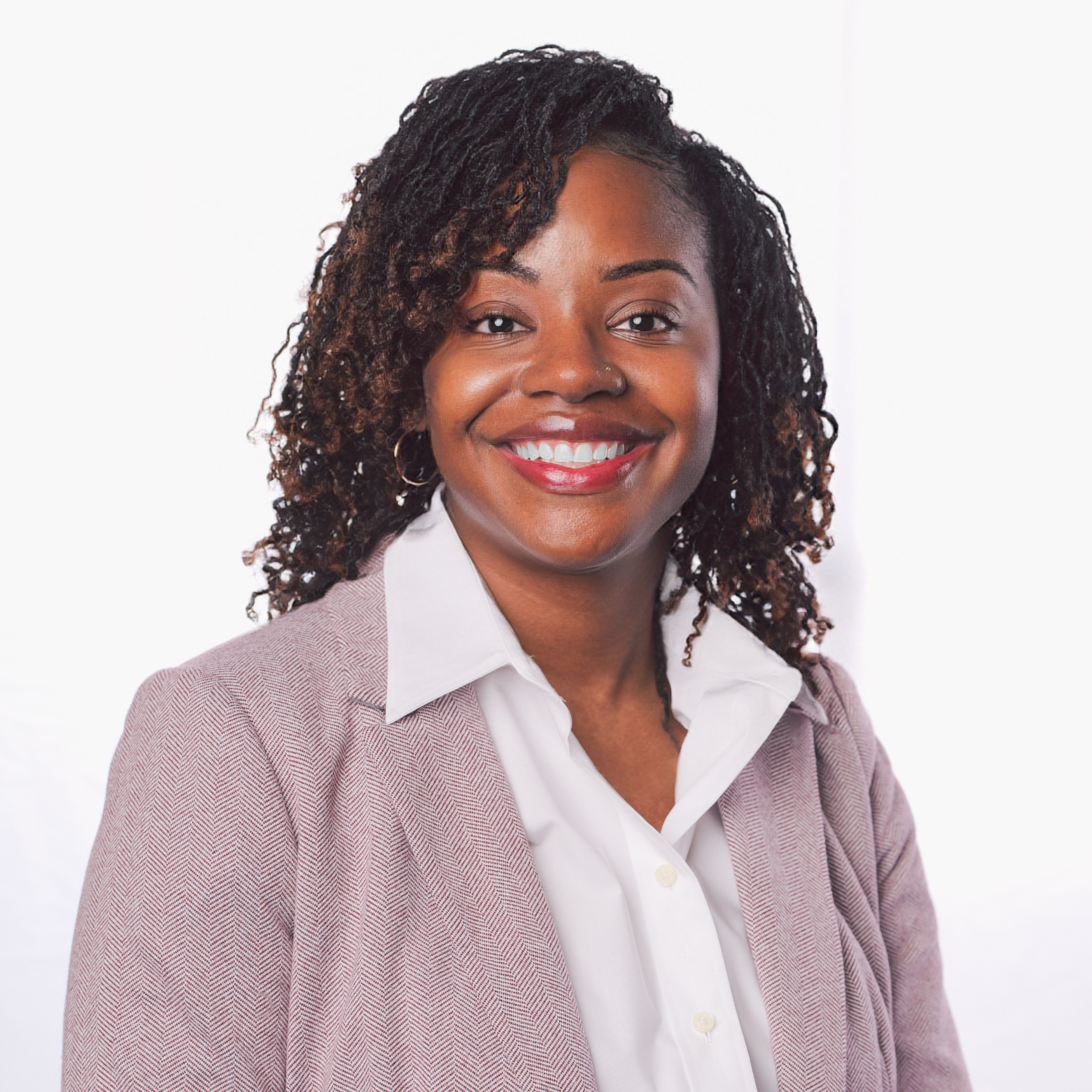


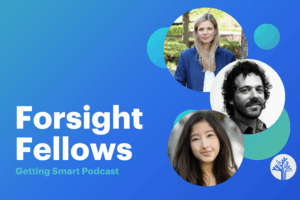
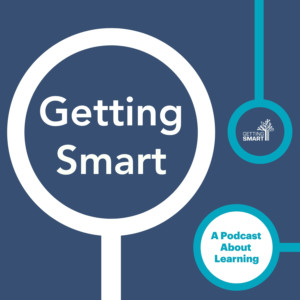


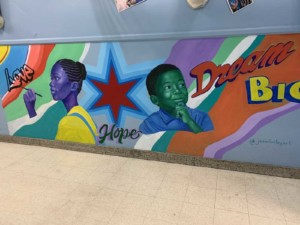
0 Comments
Leave a Comment
Your email address will not be published. All fields are required.